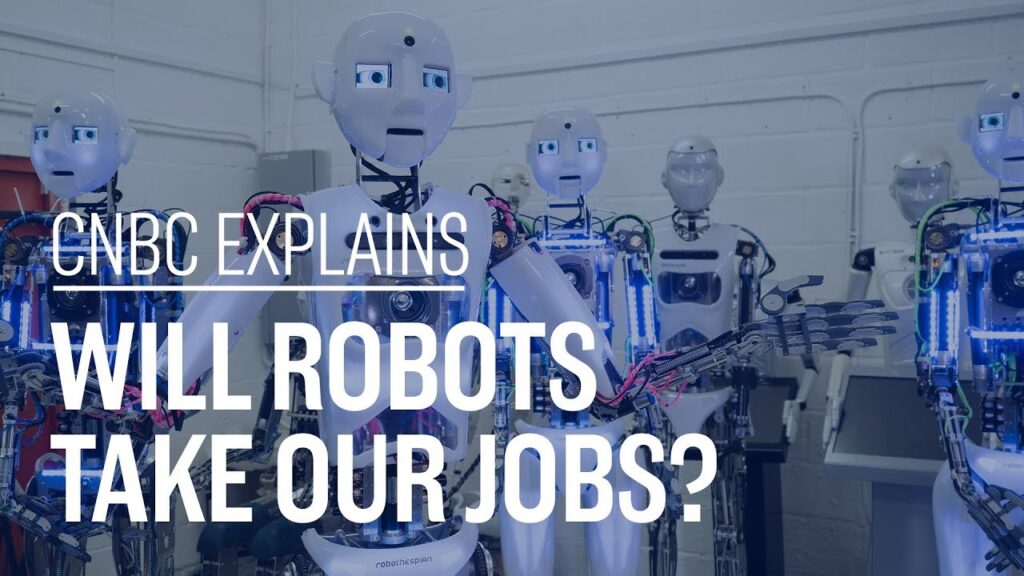Robots: The Future of the Workforce in Manufacturing
Elon Musk, the renowned entrepreneur and visionary behind Tesla and SpaceX, recently made a bold statement that has sparked intense debate and speculation. In a YouTube video titled “Will robots take our jobs? | CNBC Explains,” Musk suggests that robots will be able to do everything better than humans in the near future. This thought-provoking statement directly affects various industries, and particularly, the manufacturing sector. In this article, we will delve into the implications of Musk’s statement on industrial robots in manufacturing.
Industrial robotics has come a long way in the past few decades, revolutionizing the way we produce goods. These machines are capable of performing monotonous, repetitive tasks with precision and efficiency, minimizing human error. However, with advancements in artificial intelligence and machine learning, the capabilities of industrial robots have expanded exponentially.
The integration of AI technologies into industrial robots has paved the way for improved decision-making, adaptability, and problem-solving capabilities. These robots are now able to learn and adapt to new situations, making them highly flexible in a manufacturing environment. They can carry out intricate tasks such as assembly, welding, and quality control with immense accuracy and speed. With such capabilities, it is not surprising that Elon Musk sees a future where robots outperform humans in almost every aspect of manufacturing.
One of the primary advantages of using robots in manufacturing is increased productivity. Industrial robots can work 24/7 without the need for breaks, unlike their human counterparts. This round-the-clock production ensures a consistent output and reduces downtime, leading to increased efficiency and cost-effectiveness. With robots taking over labor-intensive tasks, human workers can be allocated to more complex and creative roles that require critical thinking and problem-solving skills.
Aside from productivity, robotics in manufacturing also improves workplace safety. Many industrial processes involve hazardous materials or conditions that pose risks to human workers. By utilizing robots for these tasks, we are effectively reducing the chances of workplace accidents and injuries. Furthermore, robots are not affected by external factors such as noise, temperature, or humidity, enabling them to operate flawlessly in any environment. This enhanced safety factor makes industrial robots an attractive option for manufacturers looking to create a safer work environment for their employees.
However, the rise of industrial robots in manufacturing does raise concerns about the future of human employment. With robots being able to perform tasks better, faster, and cheaper than humans, the fear of widespread job loss is understandable. After all, if robots can do everything better, what place does the human workforce have in the manufacturing industry?
While the idea of a fully automated manufacturing industry may seem daunting, it is essential to view it from a broader perspective. Historically, advancements in technology have led to the creation of new job opportunities rather than complete eradication of employment. As more routine tasks become automated, the demand for workers with technological expertise will increase. These workers will be responsible for designing, programming, and maintaining the robotic systems, ensuring their optimal performance. So, while robots may replace some jobs, they will inevitably create new avenues for employment.
Furthermore, the integration of industrial robots into manufacturing processes does not necessarily mean a complete replacement of human labor. Instead, it enables a synergy between humans and robots, where each brings their unique strengths to the table. Humans possess creativity, intuition, and emotional intelligence – traits that are difficult to replicate in a machine. With robots taking over repetitive and mundane tasks, human workers can dedicate their time and skills to more complex and strategic activities, driving innovation and growth within the industry.
In conclusion, Elon Musk’s assertion that robots will soon surpass human capabilities in manufacturing does hold weight. The rapid advancements in industrial robotics, fueled by AI and machine learning, have pushed the boundaries of what these machines can achieve. Industrial robots have proven to be highly productive, efficient, and safe. However, the fear of widespread job loss should be mitigated by viewing automation as an opportunity for human workers to adapt and upskill into more complex roles. With the right approach, humans and robots can coexist in harmony, revolutionizing the manufacturing industry and propelling it into a new era of innovation and success.
References:
– “Will robots take our jobs? | CNBC Explains.” YouTube, CNBC International, 15 Feb. 2018, www.youtube.com/watch?v=TSXHVMHwVG4.
– “Industrial Robots in Manufacturing.” Universal Robots, www.universal-robots.com/solutions/industrial-robots-in-manufacturing/.
Industrial Robot
The Future of Work: The Impact of Robots on Jobs in Manufacturing | Explained by CNBC


